Spring & Summer Blooming Bulb Care
“I love planting bulbs. It is making the promises of tomorrow, believing in next year and the future.”
Jean Hersey
The Difference Between Spring & Summer Blooming Bulbs
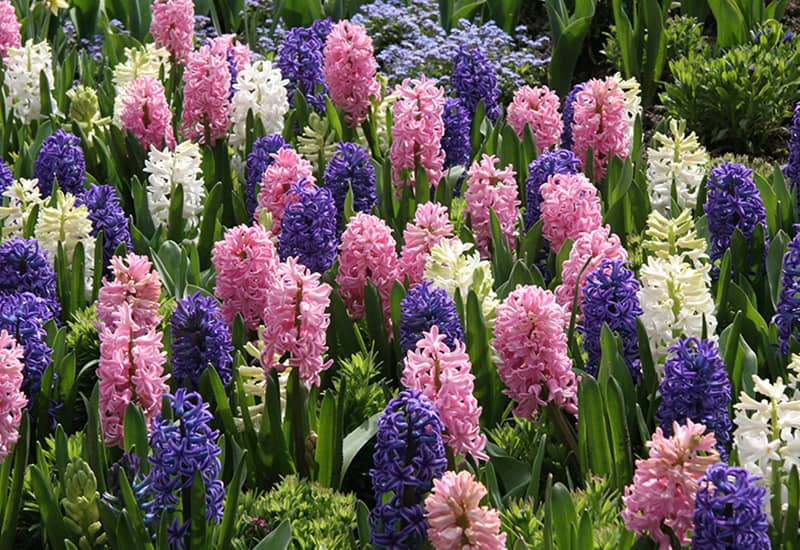
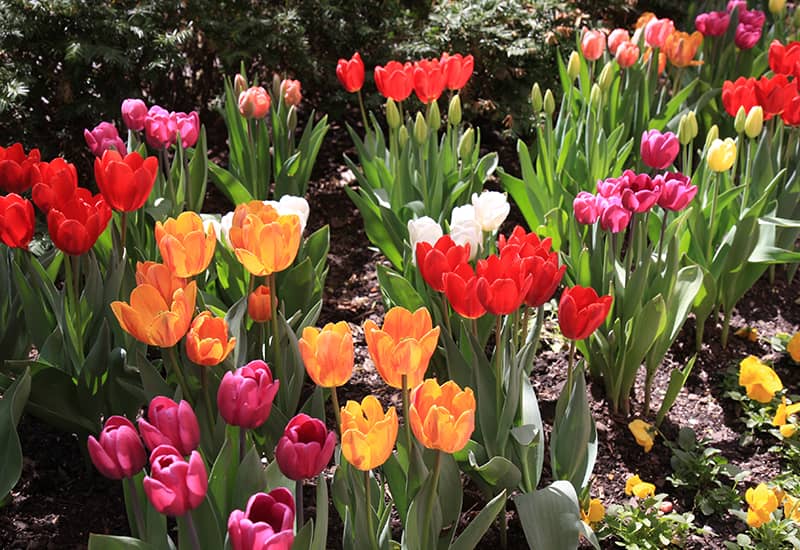
Spring Blooming Hyacinth
Spring Blooming Tulips
Spring Bulbs: Must be planted in the fall before the ground freezes.
Examples of spring blooming bulbs:
- Tulips
- Grape Hyacinth
- Daffodils
- Crocus
Tips for planting spring blooming bulbs:
- Read the package. Every type of bulb has a specific depth to which it should be planted. Use a bulb planter for digging.
- Plant bulbs with the pointed end facing up.
- Use a bulb fertilizer at the time of planting and again when new growth emerges in early spring.
- Water bulbs as needed throughout the year.
- Once the bulb is done flowering, the green leaves must remain on the plant for the next few weeks to re-energize the bulb for flowering the following spring. Once leaves turn yellow or brown, remove them.
- It’s ok to plant annuals in-between the green leaves of bulbs. Spring bulbs have the ability to come back each year.
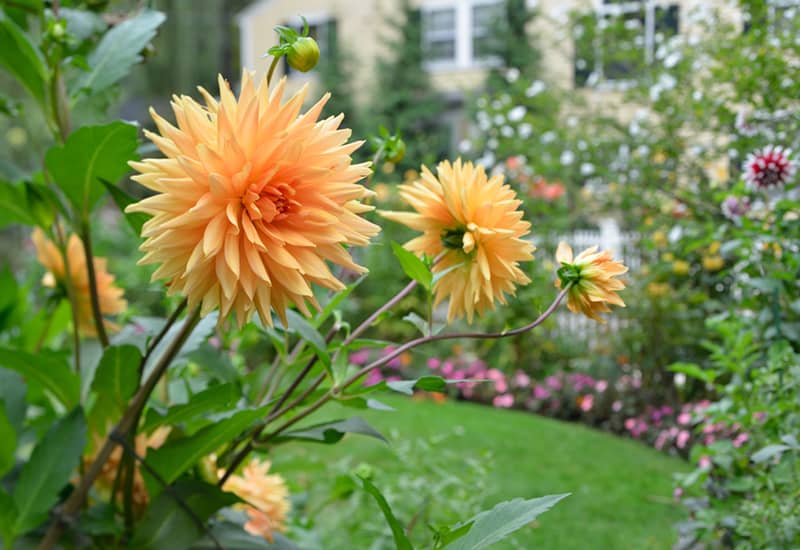
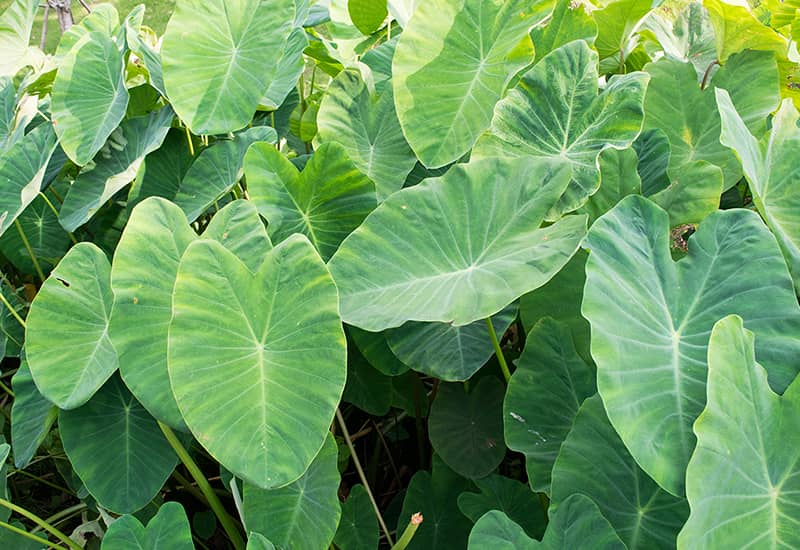
Summer Blooming Dahlia
Elephant Ears in the Summer
Summer Bulbs:
Are planted in the spring after the danger of frost has passed.
Examples of summer blooming bulbs:
- Tuberous Begonia
- Canna
- Elephant Ears
- Dahlias
- Caladium
If you plan to lift and store your summer bulbs, keep these tips in mind:
- When the bulbs are ready to be lifted in the fall, cut back the stems to about 4-6 inches from the ground.
- Carefully dig up and lift the bulbs or clumps. Dust the soil off the bulb. Let them dry for a few days in a shady, frost-free area. Keep any clumps intact during storage; they can be divided before planting next season.
- Label your bulbs and pack them in a box filled with vermiculite, perlite, peat moss or another similar medium. Try not to let the bulbs touch one another.
- Store box in a place where temperatures stay between 40- and 55-degrees fahrenheit and is frost free.
- Throughout the winter, regularly check your bulbs for mildew and rotting. If any appears, scrape it out and dust the wound with sulfur.
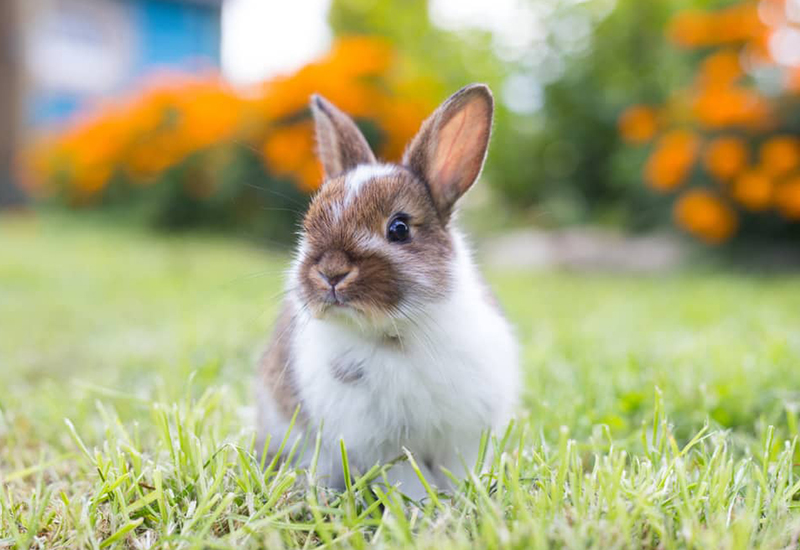

Protecting bulbs from squirrels and other critters
Squirrels can smell the fresh bulbs in the ground; they are also curious to see what you are burying. Be fastidious and clean up dried, papery coverings that fall off your bulbs during planting. Thoroughly remove any debris that might be a signal that bulbs were recently planted.
Success can be had with Dried Blood Meal or REPELS-ALL. Another trick is to dip the bulbs in a repellent before planting them. Covering the area with mulch will also help stop squirrels from being curious about what was just planted.
If you just can’t get the squirrels to leave your tulips alone, try planting bulbs that squirrels dislike such as daffodils, allium, fritillaria, galanthus and leucojum.
Squirrel damage to bulbs is a fall problem; once the bulbs have been in the ground all winter, squirrels seem to leave them alone. However, come spring they may become interested in the new growth, especially tender bulbs and flowers.
Additional applications of repellents may be needed in spring on a variety of garden plants to protect them.
Fertilization & Repellants:
- Treat spring bulbs with a fertilizer at the time of planting and again when new growth appears.
- Treat summer bulbs with a fungicide such as dusting sulfur or bulb dust to prevent rotting and storage.
TOOL
